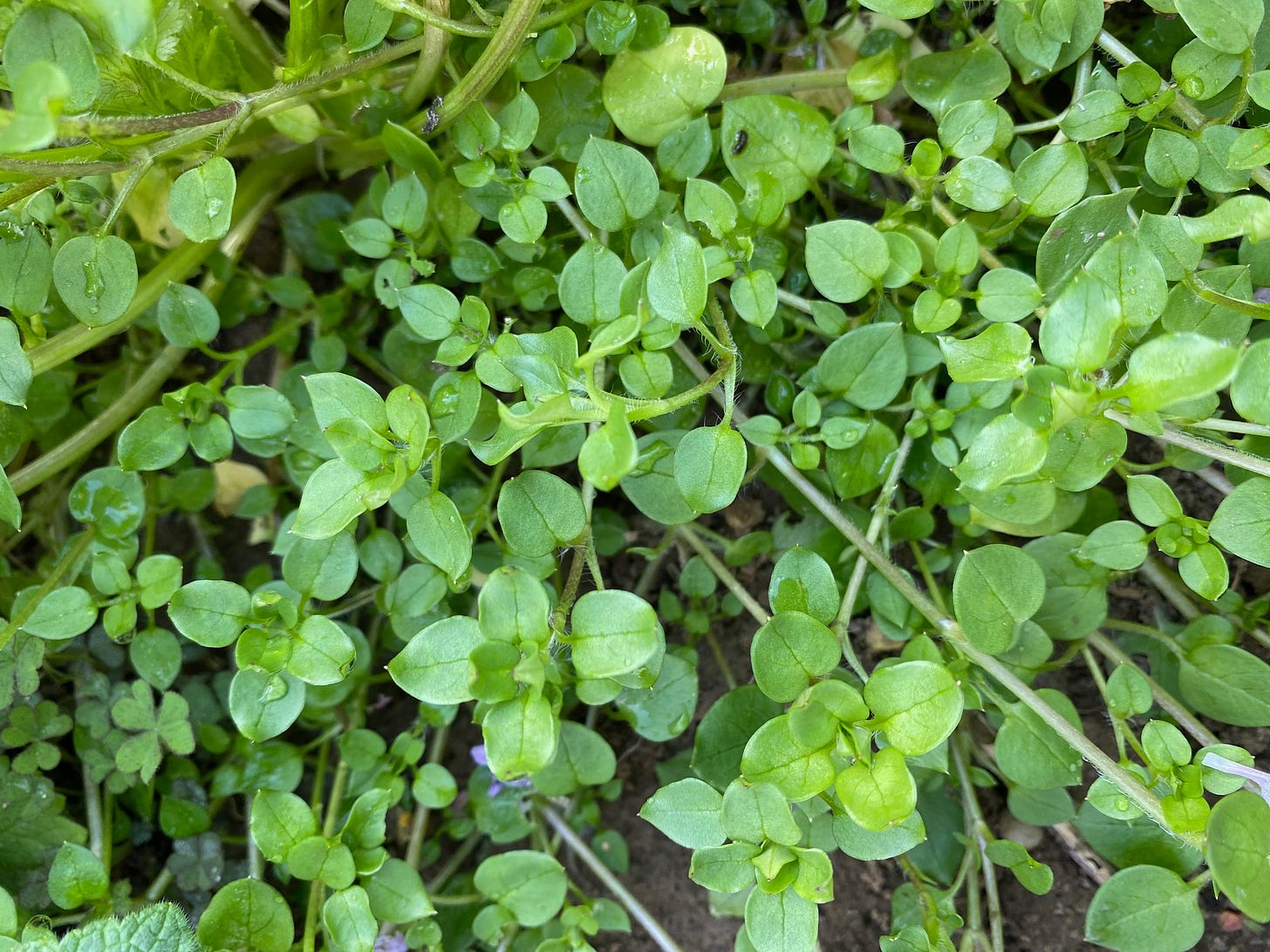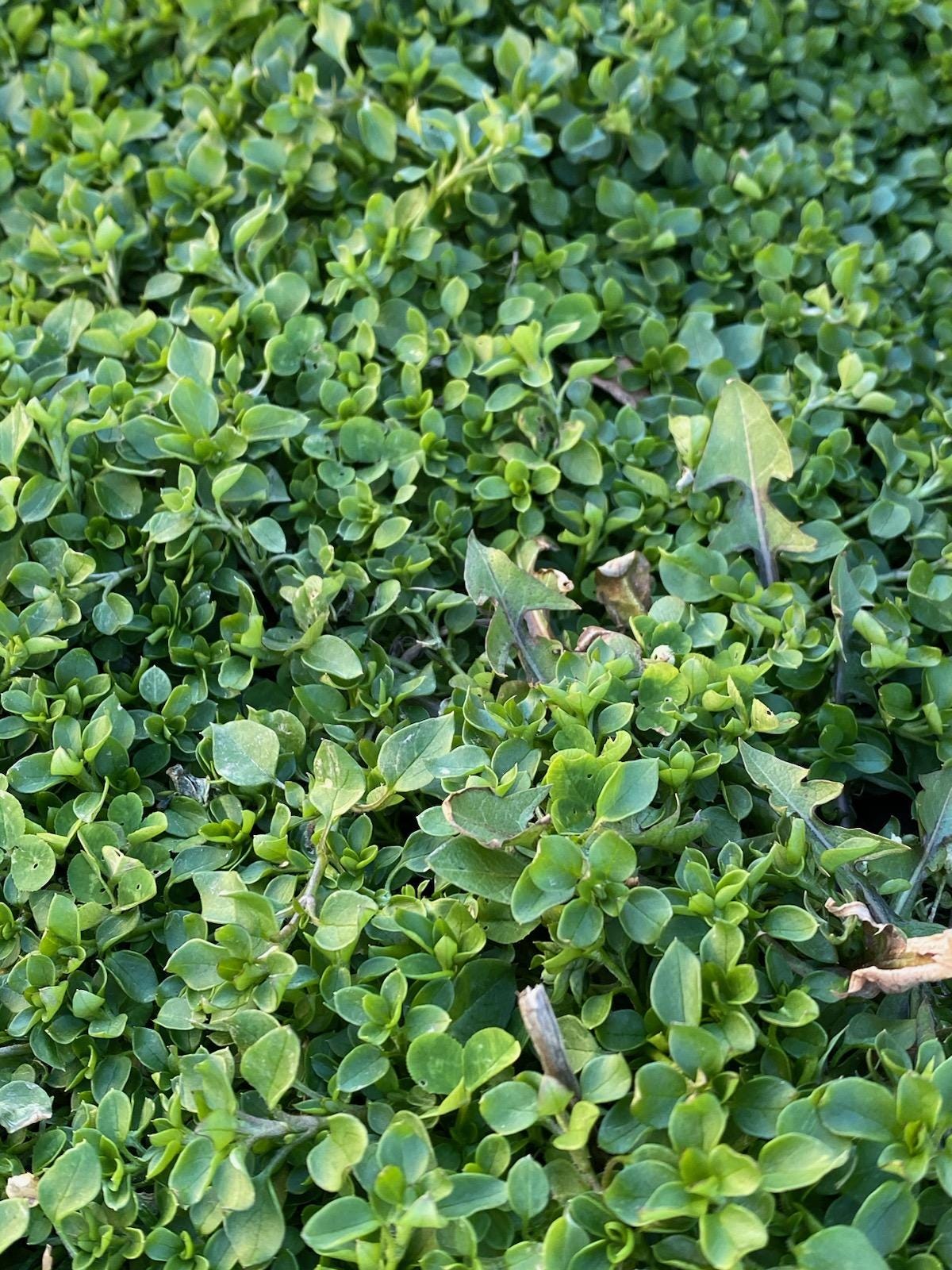Chickweed 1 gave info on how to know you have the right weed, and a short overview of the characteristics that make it useful. If you grew bales of it on a farm, and had some large extraction equipment, you could drag a huge variety of medicine from this plant. Weedom is about food and meds for the people. We'll focus on what normal people with kitchen tools and some inexpensive equipment can obtain in useful amounts.
What we see in research literature are wondrous things such as ultra-cold extraction technology using ethanol cycling, or super critical CO2. The good news is that more and more of this tech is being developed and scaled up and down, all because of Cannabis, the hugest, taxable, cash cow. Those of you who get enthused enough to go into production can take advantage of this bounty. Perhaps take a look at an ethanolic cold finger extractor.
To get the most out of your weeds, it's vital to consider how the processing affects the natural ingredients. This is built into Weedom, and when you take advantage of this knowledge, people will notice that your concoctions actually work.
Chickweed is one of those non-storables. The fresh herb doesn't last for days and weeks in the refrigerator, otherwise you'd see it in grocery stores. Most references from the literature, and savvy herbalists agree that if you dry it, you had better use that product right away in a tincture or whatever other product you'd like to make. The mucilage and demulcent ingredients will change character with boiling or high heat. This will affect its use in wound healing (vulnerary), and in soothing the digestive tract, throat, etc. Therefore, chuck out the idea of boiling or simmering chickweed tea, if you’re using it for the demulcent and mucilaginous properties.
Crockpots are cheap, especially now that there are instapots and multifunctional cookers. Think about crockpotting or a warming oven at low temp for oil extraction or tea making.
Until you get an infra red thermometer, (affordable investment), you could test your extracts the way that moms test the stored breast milk or formula to make sure it isn’t too hot for the baby. The IR thermometer gives instant results. You'll have a thousand other household and homestead uses for this equipment if you purchase one with a fairly wide temperature range, (not the same one for detecting fevers). It's a great way to locate chimney fires. Don't ask how we know :-)
Assuming that you live in a normal home, There are various ways to get some goodies out of chickweed.
Just eat it. Or cook with it: Salad, soup, saute, stirfry. Compared to other greens, Chickweed has generous vitamin C, vitamin A, and potassium.
Make a tea (a.k.a. infusion or tisane). Use a low temperature, below 160 degrees. For full demulcent effect, longer time and lower temp is recommended. Major chemical classes available within water extracts are polysaccharides, phenolic compounds, the mucilages that bestow the demulcent effect, flavonoids, aldehydes, ketones, amines, and various other polar molecules. Soothing irritations, and injury of the mouth throat, the GI tract, and skin can be accomplished using chickweed tea. Freeze some cubes of strong tea for summertime bug bites. For topical use, we try for equal weights of chopped up, fresh chickweed and water. Warm those together in the lowest temperature oven or crockpot, but do not boil. Squeeze out the liquid while still warm, through a strainer plus cloth. Important: it filters faster while warm. That liquid can be applied to itchy rashes, bug bites, etc. You can skip separating the weed from the water, wrap everything in a cloth or towel and use it as a poultice.
Extract it into oil. There are recipes for chickweed infused oil and salves all over the place. Be aware that the complex carbohydrates that give the demulcent effects won't be prominent in that salve, but terpenes, phenolics, steroids, etc, will be extracted.
Extract it with ethanol, (a.k.a. Everclear, vodka, or pick a flavor) to make a tincture. Or extract into glycerin for those who don't want the alcohol. Both will pick up a similar array of compounds, such as the flavonoids, sterols, saponins, terpenes, phenolic compounds and alkaloids. We conclude that either multiple extractions, or evaporating off most of the ethanol will be needed to obtain sufficient strength for many of the uses of chickweed. That’s if you want to avoid having alcohol as one of your major food groups. Sufficiently strong glycerites of chickweed will be laborious in the home setting. It might even be more practical to make the strong tincture, boil off the ethanol and resuspend the dried residue in glycerin.
Extract it into vinegar to obtain minerals and other water soluble compounds.
There are a vast number of efficacious compounds in chickweed, but people won't always be able to easily obtain therapeutic dosages of all of them with home extraction techniques, or by eating the whole plant. Lucky preppers who have a home freeze dryer have more options with respect to concentrating the constituents of chickweed.
In one study, by Arora and Sharma, the anxiolytic component found in the methanolic extract requires a 100mg/kg dose in mice to produce the similar effect to diazepam 2mg/kg. Given the percent yields obtained from methanol extraction seen in various studies, that would represent approximately 1 gram of dried plant material per kilogram.
There are various conversion methods for an initial human dose to be estimated from animal studies, based upon weight and body surface area, for example that proposed by Nair and Jacob. Converting from this dose from mice to humans will amount to a dose of about 5.6 grams of dried plant material, and that would be taken up in 28 ml of a 1:5 standard tincture. The ethanol will definitely be taking part in the anxiety reduction, especially if you use stronger than 40 percent vodka. Incidentally, the mice in the aforementioned study were getting a comparatively large diazepam dose. This is an example of how differently the various species process drugs. Their chickweed dose would scale up to 30 grams or about 1 ounce of the fresh plant for us.
Its cool to think that if you munch on a bunch of chickweed, things could get fairly mellow. If you chill out by means of beer, you'll tend to gain weight, but when you eat chickweed, it could help you lose weight. It helped mice which had been induced to get fat using progesterone. We observed that progesterone shots are associated with weight gain in humans. Naturally occurring progesterone stimulates the appetite, and can induce pregnant women to eat food from other people's plates, and often to become larger than is justified by the baby weight. (This effect is counteracted in some women by varying degrees of morning sickness.)
In a study by Chidrawar et al, progesterone injected mice were given some methanolic chickweed extract which reduced the weight gain compared to the mice without chickweed significantly, and in a dose dependent way. The methanol extract was found to be much more effective than the ethanol extract, and saponins, flavonoids and sitosterol were proposed as components contributing to this effect. Again, the goodies responsible for this appetite reducing effect won't be concentrated enough in a home prepared ethanolic 1:5 tincture to be practical, and might more likely be extracted in warm water. The dose range for this effect in the mice was from 100-400mg/kg of the dried methanolic extract. Perhaps the most practical avenue for appetite reduction and weight control is the salad method. The amount for humans, corresponding to what those mice were getting, is a range between 30 and 150 grams, or 1-5 oz by weight of fresh chickweed.
A study of Korean "famine relief food" using cell cultures (in vitro) was undertaken to determine a possible mechanism by these plants, including chickweed, could suppress the appetite. It was found that these foods, to some extent, stimulated secretion of glucagon-like peptide, a compound which slows GI motility, and stomach emptying, and generates a sensation of fullness, or satiety.
Chickweed at Weedom was pretty tasty, yesterday (2/13/23) somewhere between sweet corn, and the silk. It's still hugging the ground, but starting to stretch out a bit, and is very succulent. It was sort of calling for some kind of southwestern chipotle dip, but that could change when spring arrives. We'd rather eat it than drink it, but you smoothie makers out there might think about replacing the kale with the chickweed.
When there’s enough chickweed to get bundles, We’ll will post a few specific recipes. In addition, we’ll seasonally return to Chickweed offering info on more of its uses, linking all the posts as we go. Remember, this weed will fade out in the summer, and come back in the fall, as long as there is enough moisture. During the summer, we’ll show you alternatives to chickweed’s functions. Look below at ‘Where We Dig” for more info, and related posts.
Don’t worry about the bells and whistles (good capitalistic marketing) at Substack. Just subscribe! Weedom will continue to offer good, free info that will show everyone how to take advantage of the food and meds of the people. Later on there will be various options for free will donations, and we’ll create a few optional information products to bring ourselves some income.
Where we dig
Please see Chickweed 1 for more info and references
Below are some specific references applying to this post.
Chak P, Chaudhary D, Jain S, et al. Phytochemical and Gas Chromatography-Mass Spectrometry Analysis of Chenopodium album and Stellaria media. Indian Journal of Pharmaceutical Sciences. 2021;83(6). Accessed February 9, 2023. https://www.academia.edu/93601341/Phytochemical_and_Gas_Chromatography_Mass_Spectrometry_Analysis_of_Chenopodium_album_and_Stellaria_media
Chidrawar VR, Patel KN, Sheth NR, Shiromwar SS, Trivedi P. Antiobesity effect of Stellaria media against drug induced obesity in Swiss albino mice. Ayu. 2011;32(4):576. doi:10.4103/0974-8520.96137
Cho H, Kim K, Jang DJ, Kim HY. Effect of six Korean plants on glucagon like peptide-1 release. Food Sci Biotechnol. 2019;28(5):1571-1576. doi:10.1007/s10068-019-00603-x
Nair AB, Jacob S. A simple practice guide for dose conversion between animals and human. Journal of Basic and Clinical Pharmacy. 2016;7(2). Accessed February 11, 2023. https://www.jbclinpharm.org/abstract/a-simple-practice-guide-for-dose-conversion-between-animals-and-human-1459.html
Sharma V, McNeill JH. To scale or not to scale: the principles of dose extrapolation. Br J Pharmacol. 2009;157(6):907-921. doi:10.1111/j.1476-5381.2009.00267.x
Singh R. Stellaria media Linn.: A comprehensive review highlights the nutritional, phytochemistry, and pharmacological activities. Journal of Herbmed Pharmacology. Accessed February 9, 2023. https://www.academia.edu/96423266/Stellaria_media_Linn_A_comprehensive_review_highlights_the_nutritional_phytochemistry_and_pharmacological_activities
wadmin1. Evaluation of Anxiolytic Activity of Stellaria media Linn. Extracts in Mice – Pharmacognosy Communications. Accessed February 10, 2023. https://phcogcommn.org/article/851








Thanks for breaking that down. I was aware of the calcium-oxalic acid connection, but your explanation clears a few question marks.
Just re-read this...it's so dense with information! Wow! Chickweed & miner's lettuce are our early spring faves in this neck of the woods. Do you have any idea as to the oxalate level in chickweed? I love greens, but the high oxalate greens don't love me back. I haven't noticed an issue with chickweed though. Great post!